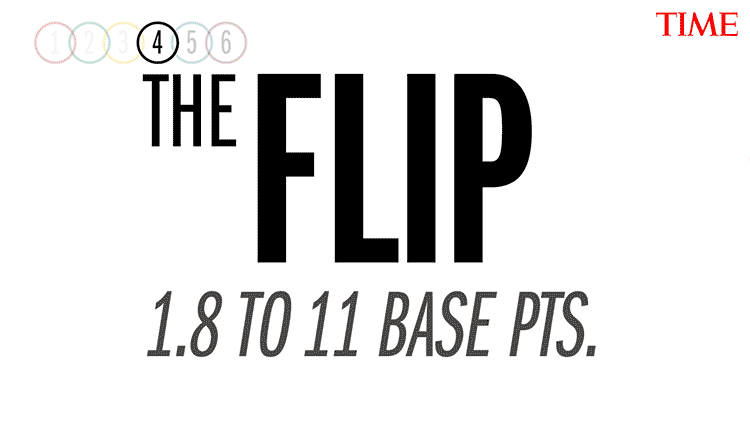Figure skating is not all about the jumps. But even the most diehard skaters and fans who will tune into the figure skating programs during the 2022 Winter Olympic Games will tell you that it’s mostly about the jumps.
That’s in part because as subjective as figure-skating scores seem to be, in recent years the sport has actually moved to quantify skating skills as much as possible. In 2004, the International Skating Union revised the judging system to reflect a combination of technical skills in order to reward the difficulty of skills like jumps and spins, as well as execution and performance. The new code of points went into effect during competitions in the 2006 season.
Read more: Your Complete Guide to Figure Skating at the Beijing Olympics
Understanding 2022 Winter Olympics figure skating scores
The scores you will see at the 2022 Winter Olympics in Beijing are broken down into the Total Element Score (TES) and the Program Components Score (PCS). The TES is the more quantitative score—it reflects the difficulty of what the skater performed. Each jump, spin, and step sequence, in the case of pairs and ice dance, lift, is assigned a base value of points. That’s the starting point of a skater’s score, so depending on each athlete’s program, the starting value of each program differs. That’s why skaters performing more difficult moves like quadruple jumps often outscore skaters performing well-executed but lower value skills like triple jumps. Judges award each element with a Grade of Execution (GOE) score, ranging from -5 to +5 for how well the skater performed the skill; the highest and lowest GOEs are dropped and the rest are averaged. The base value and GOE average add up for the Total Element Score.
Next comes the Program Components Score, the more subjective evaluation, which contains five elements: skating skills, transitions, performance, composition and interpretation of the music.
Skating skills include things such as how well the skater maintains edges, along with the speed and flow of their skating. Transitions involve the intricacy of footwork and variety and difficulty of positions and movements that the skater uses to move from one skill to the next. Performance includes how well the skater shows emotion and projects the story they are telling on the ice to the audience (in pairs and ice dance, unison and good use of space between partners is important here). Composition focuses on the concept of the program, the skater’s coverage of the ice, and originality of the choreography. Finally, in judging the interpretation of the music, judges look for how well skaters express the music’s rhythm and feeling, and whether the athletes skates to the beat of the music and times elements like jumps accordingly.
Each judge assigns a score from 0.25 to 10.00, in 0.25 increments, to each of the program components; as with the TES base values, the highest and lowest for each of the five Program Component categories are dropped, and the rest are averaged. The five Program Component averages are added, and then multiplied by an appropriate factor to bring the Program Component score align with the Total Element Score. Since the perfect Program Component Score is 50, and, for example, in the women’s short program skaters can score up to 40, the Program component is multiplied by 0.8 so its total is 40. Here’s a breakdown of how much the Program Component is factored for the different disciplines:
The Technical Component Score and the factored Program Component Score are added for the skater’s final score in either the short or free programs.
How to tell the difference between figure skating jumps
When it comes to figure skating jumps, you can sound like a skating expert by noting there are actually two kinds—edge jumps, which take off from the edge of the skate blade, and toe jumps, which start when the skater taps the jagged pick at the front of the blade into the ice for upward momentum.
Figure skating jumps also differ from one another in how skaters land—for example, whether they land on the same leg from which they launched or the opposite leg.
For female skaters, the most difficult versions of these jumps were traditionally triples, with the triple axel being the most challenging. But in Beijing, a handful of women’s skaters—particularly Russia’s Kamila Valieva, Anna Shcherbakova and Alexandra Trusova—will be attempting quads in their long programs (they’re still illegal in the women’s short programs).
For men, it’s all about the quadruple jumps, and no one does those figure skating jumps better than U.S. national champion Nathan Chen. Chen made history in 2017 as the only figure skater to successfully land five quadruple jumps in a single program. However, Japan’s Yuzuru Hanyu is likely to attempt
Here’s your cheat sheet for telling the six figure skating jumps apart during the Winter Olympics, and how many base points skaters can earn with a quadruple for each.
The toe loop

The simplest of the six jumps, the toe loop starts off with a forward approach on the inside blade edge. Then, the skater switches to a backward-facing orientation, kicking off with the backward outside edge and using a toe pick to add lift before landing on that same outside edge, for a maximum starting value of 9.5 points for a quadruple toe loop.
The Salchow

In the Salchow, the skater takes a backward approach and launches using their inside edge on one leg before landing on the opposite leg with an outside edge. A quadruple Salchow has a 9.7 point maximum starting value.
The loop jump

Different from the toe loop, the loop starts with a backward approach on the outside edge, which builds the power to launch the skater airborne. Edge jumps are more challenging than jumps that take off from the toe pick of the blade, so the loop jump has a higher starting value than the toe loop. For the loop jump, a quadruple loop is assigned a maximum base value of 10.5 points.
The flip

The flip begins with a forward approach before the skater switches to their backward inside edge, using the toe pick of the other foot to launch themselves into the rotations. They return to the ice on the outside edge of the same skate. A quadruple flip has an 11 point start value.
The Lutz

The second-most-difficult jump with an 11.5 start value for a quad, the Lutz takes a long backward approach. It is another toe-pick-assisted liftoff, using the outside edge to lead the movement. What makes it difficult is that the skater must rotate in the opposite direction than the takeoff edge; if the takeoff edge circles in a clockwise direction, for example, the skater has to rotate counterclockwise in the air and land on the outside edge of the opposite foot.
The Axel

Finally, the Axel. With a start value of 12.5 points for a quad, it’s the only forward-facing jump in the skater’s arsenal. It starts off with an outside edge launch and ends up with the skater finding their footing on the outside edge of the other foot.
More Must-Reads from TIME
- Donald Trump Is TIME's 2024 Person of the Year
- Why We Chose Trump as Person of the Year
- Is Intermittent Fasting Good or Bad for You?
- The 100 Must-Read Books of 2024
- The 20 Best Christmas TV Episodes
- Column: If Optimism Feels Ridiculous Now, Try Hope
- The Future of Climate Action Is Trade Policy
- Merle Bombardieri Is Helping People Make the Baby Decision
Contact us at letters@time.com